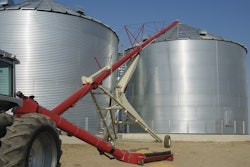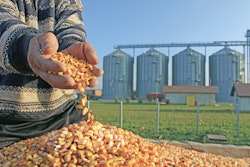
Over the last decade of traveling the country and visiting with grain elevator managers and merchandisers, I’ve seen and heard some pretty amazing ways that people do business.
Some are incredibly ingenious and others are off the charts on the opposite end of the spectrum. Many times, it is honest mistakes and misunderstanding that drive these policies, but they can directly hurt a company’s chance at making money.
I’d like to share several of these poor policies with you today:
1. We can’t sell the bushels if we don’t have them
This one takes on many different forms. Some have to have the physical bushels, some have to have them bought on a forward contract, and some have to have physical possession, title, and have them bought.
No matter what form it takes, it is an unnecessary burden on a merchandising program. The idea is to limit risk, but it limits opportunities instead. No one should be irresponsible with how much they sell, but when the basis is good for a delivery slot where you know you will have bushels to sell, you need to be able to capture that.
My favorite question to ask someone with a policy like this is: If you can’t sell it because you don’t have it yet, can you buy it if you haven’t sold it? It’s really the same logic.
2. Free storage or Price Later at the wrong time
Free Price Later (PL) can be a great tool to help give your farmers extra marketing time and give your buyers service when they desperately need it. In an inverted market, some of the best merchandising margins can be made offering free PL and providing invaluable service to your farmers and buyers.
However, some elevators will offer this at the exact wrong time: right at harvest or in large carry environments. This can and does cost companies huge amounts of money. Free storage or PL for a couple of days at harvest until a farmer decides what they want to do is very reasonable, but I’ve seen elevators offer free storage at fall harvest that goes until Dec 31!
Basis is the market’s way of paying those who have space. If you allow free storage or PL coming out of harvest, you’ve given that payment away.
3. No setting pre-spreads
This is another policy aimed at reducing risk. Many look at setting pre-spreads as speculative. While I agree that setting a spread because you want to profit from that spread changing is speculation, pre-spreads are completely different.
Pre-spreads are simply locking in a favorable merchandising environment to execute your plan. If you buy harvest bushels and carry them for a few months, you are going to have to put a spread on.
Why not execute that spread at a time when it is favorable? It’s just sound management.
4. One spot price for the whole day
You don’t see this much anymore, but you do see it still and it baffles the mind. We all know how volatile the market is for 17.5 hours a day. Some will say that sometimes it is up and sometimes it is down and it evens out over time. False. Farmers know what the markets are doing. If markets are up from your posted price, they won’t sell until tomorrow. If markets are down, they will take your old, higher price. This is a good old-fashioned way of bleeding money out of a grain elevator.
5. Incentive programs based on average margins or percentage of sales
These are the most common incentive blunders I’ve seen, although there are others. A good incentive program is a great motivator for employees and can mean great things for a business if properly devised.
I’ve seen managers incentivized based on average per bushel margin, turn down very profitable deals. I’ve also seen them build in so much margin into their bid that they become uncompetitive. Making $1.00/bushel on 1,000 bushels is not nearly as good as making 40 cents on 500,000 bushels, but some managers are incentivized that way.
The incentives based on a percentage of gross sales also can kill morale in a year of high prices. Even though profitability may be the best ever, bonuses are cut or not earned at all because grain prices happen to be high that year. Not a great message for your employees.
6. Forward contracting storage
That’s right — allowing people who do not own your space to have rights to use your space how they see fit during your most crucial time of the year: harvest. What I mean here is delivering grain, putting it in storage, then forward contracting at your posted bid for some later delivery slot.
This limits your ability to earn a margin on harvest bushels as well as your ability to efficiently turn your space and service your farmers as best you can. It’s a real no-win situation. Your bid for any given slot needs to be for grain delivered at that time.
7. Price Later (PL) deadlines in the summer
I could argue that you shouldn’t put a deadline on PL bushels at all, but if you are going to do it, DO NOT make the deadline during a time of traditionally high basis. You are trying to buy low basis and sell high basis. Set your deadline at a time that will allow you to buy low basis if the farmer waits all the way to the deadline. Many times the only reason for having a summer deadline is because of a fiscal year end, which brings me to my next policy …
8. Making sales due to fiscal year-end
This is something I see all the time in the grain business. It usually stems from either poor accounting procedures, poor understanding of how accounting works, or both. The bottom line is that a business should seek to maximize its profits. It should never sacrifice available profits to make some random snapshot look good.
Many times, merchants will sell earlier to show more profits in the current year and forego what would have been a greater profit that just would have shown up in the following year. A huge way to help this is to make sure your year-end occurs at a reasonable time for a grain business.
Conclusion
I’m sure there are many more grain elevator policies out there that may drive you crazy. While there are a lot of moving parts that come with running a grain business, we must always remember that the majority of the profitability comes from the merchandising margins. So, when setting policy, you have to keep that in mind and not create policy that ties the hands of your merchandising program. Many of these poor policies are created by people who don’t understand that what they are doing will hurt the merchandising program.
To avoid this, grain businesses should seek input from all levels of the organization, educate their merchandisers so they see problems right away, be sure to periodically analyze your policies and be open to changing when necessary.



















